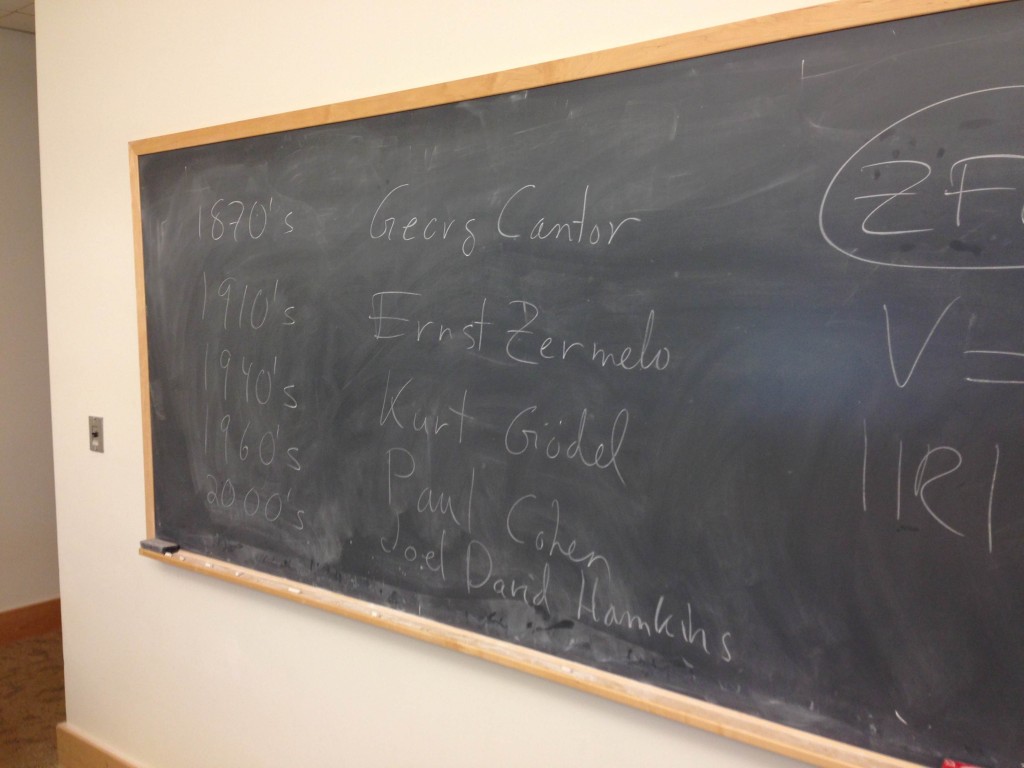As the designated faculty speaker, selected after nominations from all the various departments at the college, I made the following remarks, in full academic regalia, at the Dean’s List ceremony this evening at the College of Staten Island.
 Thank you very much to the Dean for the kind introduction.
Thank you very much to the Dean for the kind introduction.
I am pleased and honored to be here, amongst the elite of the College of Staten Island, students who have made the Dean’s list for academic accomplishment. You have proved yourselves in the challenges of academic life and you should be proud. I am proud of you.
You are our intellectual powers, engines of thought and reason. Probably your minds are running all the time—it does seem a little hot in here…
In the classic Wim Wenders film, “Wings of Desire,” some characters are able to hear and experience the thoughts of others. And although one ordinarily imagines a library as a place of quiet contemplation, in the film the library was a cacophy of voices, a hundred trains of thought running through, each audibly expressing the content of a person’s mind.
This is how I like to imagine the arena of the mind, lively and exciting.
But also playful. Perhaps I’m called on to offer some advice to you, and my advice is this: pursue an attitude of playful curiosity about your subject, whatever it is. Play with new ideas, explore all facets of them, going beyond whatever had been expected of you. You will be led to vast new lands of imagination.
A while back, my son Horatio, in fourth grade at the time, showed me his math homework. His teacher had said, “I am thinking of a number. It has a 3 in the ten’s place. The digits add to 10. It is prime. What is my number?” Can anyone solve it? Yes, 37 is a solution, and Horatio also had found it. He asked me, “are there other solutions?” Now perhaps an unimaginative person might think only of two-digit numbers, and in this case, 37 is the only solution. But with imagination, we can seek out larger possibilities. And indeed Horatio and I worked together at the cafe and realized that 433 is another solution, as well as 631 and 1531. I checked a table of prime numbers, and found that 10333 is also a solution, as is 100,333. I began to wonder: are there infinitely many solutions? I had no idea how to prove such a thing.
So I posted the question to one of the math Q & A sites, and it immediately rocketed to the top, getting thousands of views. Mathematicians all around the world were thinking about this playful version of my son’s homework problem. Some of these mathematicians wrote computer programs to find more and more
solutions; one young mathematician found all the solutions up to one hundred million, systematically. Another found enormous solutions, gigantic prime numbers, one with 416 digits (mostly zeros), which were also solutions of the problem. But with regard to whether there are infinitely many solutions or not, we still had no answer. It turns out to be an open mathematical question; nobody knows, and the question leads to deep number-theoretic waters.
Another instance of playfulness began when I was a graduate student. A prominent visiting mathematician (Lenore Blum) gave a talk about the theory of infinitely precise computation, concerning computational devices able to undertake perfectly accurate real number arithmetic. After the talk, inspired, a group of us speculated about other infinitary notions of computability: what could or should one do with a computational device able to undertake infinitely many steps of computation? We played with the idea, and over several years a theory gradually emerged. Although some of my research colleagues had discouraged me, I ignored them and continued to play with and develop my theory. In time, our ideas grew into a new theory of infinitary computation. We had invented the subject now known as infinite time Turing machines. Those playful ideas led to a new theory that is now studied around the world, with new masters theses written on it and Ph.D. dissertations written on it, and conferences focused on it; our original article now has hundreds of citations.
Play is not always easy. It took years of seriously hard work in the case I just mentioned; but essential to that work was play. So please play! Explore your ideas further, and see where they take you!
Thank you very much.




